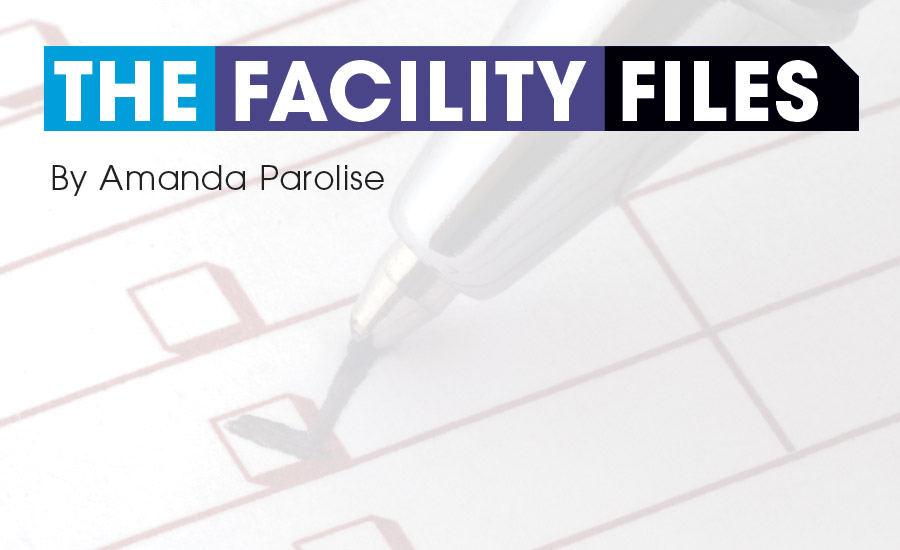This month’s Facility File is based on a new 40,000-square-foot office building HVAC system using VRF heat pump equipment with a focus on the Back2Basics February test. The project will include two VRF systems, each serving approximately 20,000 square feet of space. The building will also have a 100 percent DOAS gas-fired rooftop HVAC system for ventilation to the occupants in the building.
At the recommendation of the owner’s consulting engineer, the project delivery method shall be integrated project delivery (IPD) referenced in the 2015 ASHRAE Handbook — HVAC Applications chapter 58 (Integrated Building Design) as well as chapter 3 (Commercial and Public Buildings). The IPD team shall include the building owner’s office manager, the building facility manager, a third-party owner representative to facilitate the project and oversee the VRF manufacturer’s startup and commissioning technician, the design team, general contractor, and HVAC subcontractor. The building’s facility manager and her O&M staff will also participate in the IPD process beginning at the conceptual phase along with the preselected VRF equipment manufacturer’s representative. The facility manager will assist the IPD team in understanding the intricacies of owning, operating, and managing this building.
The O&M staff shall review the 2016 ASHRAE Handbook chapter 18 (Variable Refrigerant Flow HVAC systems), 2015 ASHRAE Handbook – HVAC Applications chapters 36-43 (Building Operation and Management), and chapter 59 (HVAC Security). In addition, the staff will review ASHRAE Standard 15-2016 and Standard 34-2016 — Safety Standard for Refrigeration Systems and Designation and Classification of Refrigerants.
With all these design guidelines from ASHRAE, the IPD team discussed specific building standards that need to be applied to this project as well as project scheduling/timeline. For the facility operation, with in-house staff and not an outsourced group, the staff will want to assure there is adequate contract specification requirements pertaining to O&M, training, a preventive maintenance work order system, and energy operating budget.
In the Phase 3 Concept Development of the IPD project, the facility manager and a few of her O&M technicians will want to contribute information to the design team member’s writing of the contract specification and more specifically the following activities: service contracts, parts inventory, and as-built drawings requirements.
For this February Facility File, the IPD team will work together with the owner-designer-builder based on a building program construction budget. The IPD estimator, along with the prime subcontractors, will be involved in the design phase and contribute to the contract documents. In the construction phase, the O&M technicians will want to revisit the issues noted earlier that were in the design phase.
Next comes the startup and commissioning phases, and the O&M staff will want to be proactive in following along with the IPD team’s mechanical-electrical in-house coordinator and the subcontractor’s startup personnel and receive equipment and system training from the VRF startup and commissioning technician using the O&M manuals and contract drawings (that will eventually become the as-built drawings).
The HVAC subcontractor and VRF technician shall go through an automatic control system initial dry-run demonstration prior to demonstrating the system to the owner representative, HVAC design engineer, and the O&M staff. The ATC subcontractor will also begin collecting system performance by trending pertinent HVAC system and equipment data including the following:
[X] Outdoor air dry bulb and wet bulb temperature [X] Space dry bulb and wet bulb temperature [X] Space pressure [X] Outdoor air quantity [X] Alarms [X] Off-site internet computer control interface
Taking the same approach as the design engineering, the facility manager’s personnel will use a series of computer generated touchscreen project checklists that allows her staff to confirm that the following facility files have been collect. This process should start at the beginning of construction and not at project closeout so that the facility files can be inputted into a CMMS system. Touchscreen O&M checklists should include:
[X] Equipment shop drawings [X] Maintenance work orders [X] O&M manuals, parts list, and lubricants [X] Troubleshooting tips [X] Remote monitoring instructions
The O&M staff should review the contractor-produced refrigerant piping system and sheet metal system field fabrication/field coordination drawings prior to fabrication. Touchscreen service checklists should include:
[X] Location of automatic dampers and volume dampers [X] Filters [X] Equipment and control devices [X] Access for servicing equipment [X] Refrigerant monitoring devices
The training process should include specific HVAC VRF systems, the DOAS ventilation, and emergency plan training due to unexpected alarm, outdoor air quality alarm, refrigerant alarm, etc. The air balancing report will be completed and as-built conditions updated after the final TAB report. This will require the TAB subcontractor to provide the air balancing reports along with the associated system flow diagrams noting quantities and pressures for rebalancing if necessary as part of the project closeout documents. Touchscreen training checklists should include:
[X] Equipment [X] System startup and shutdown temp [X] Emergency plan [X] Automatic controls [X] Energy management





